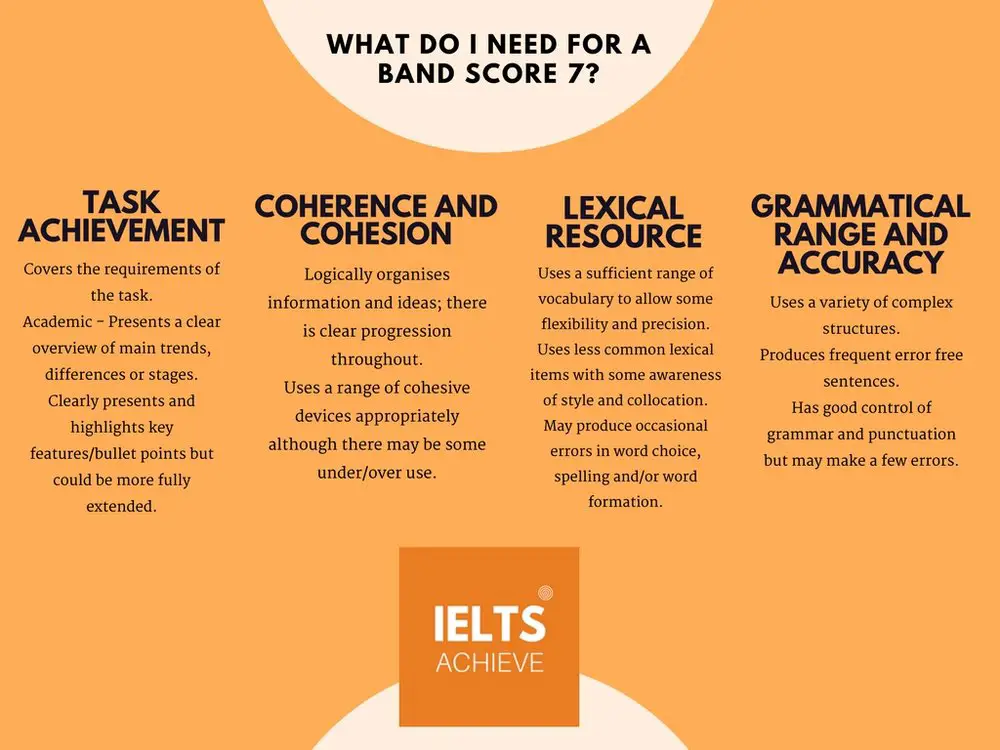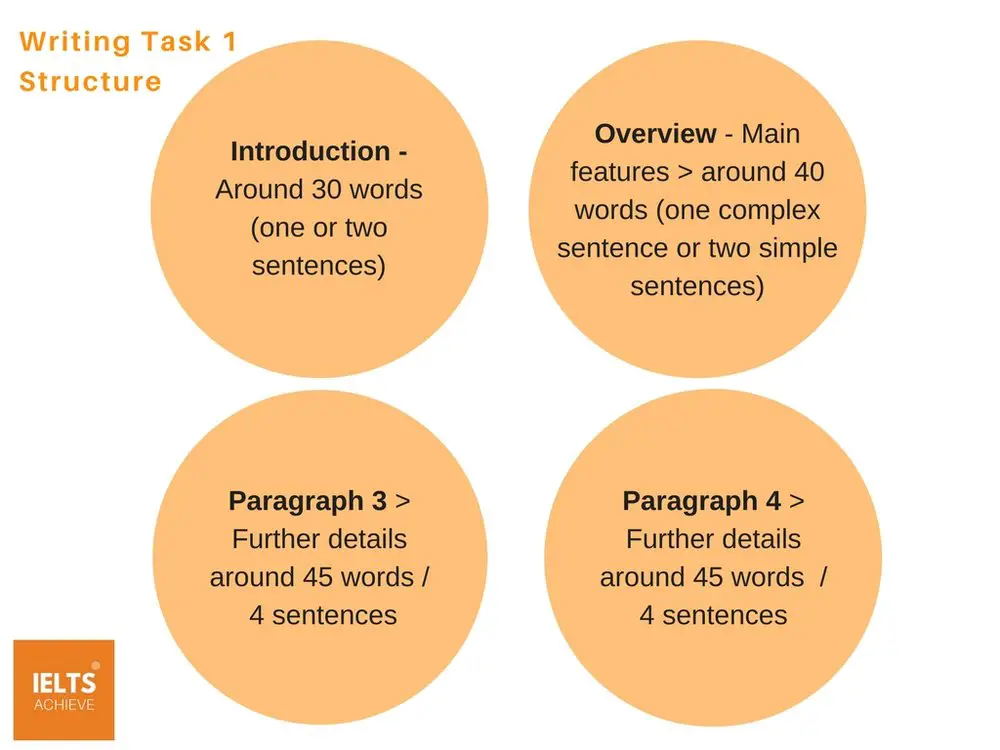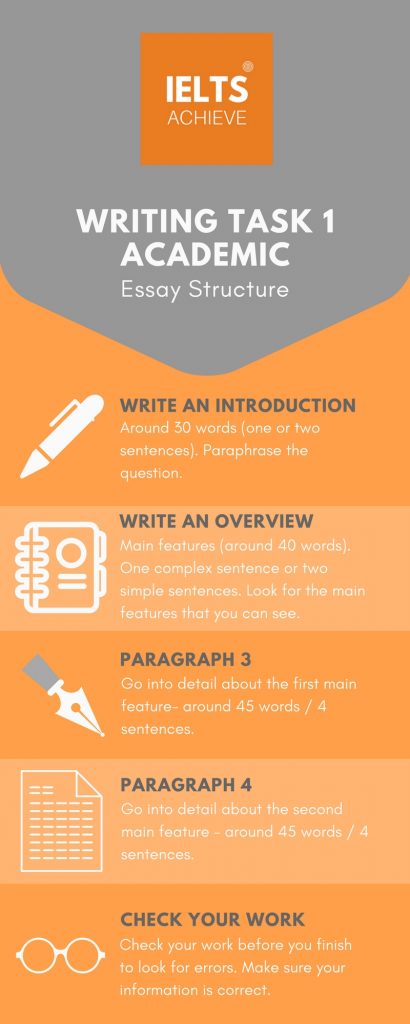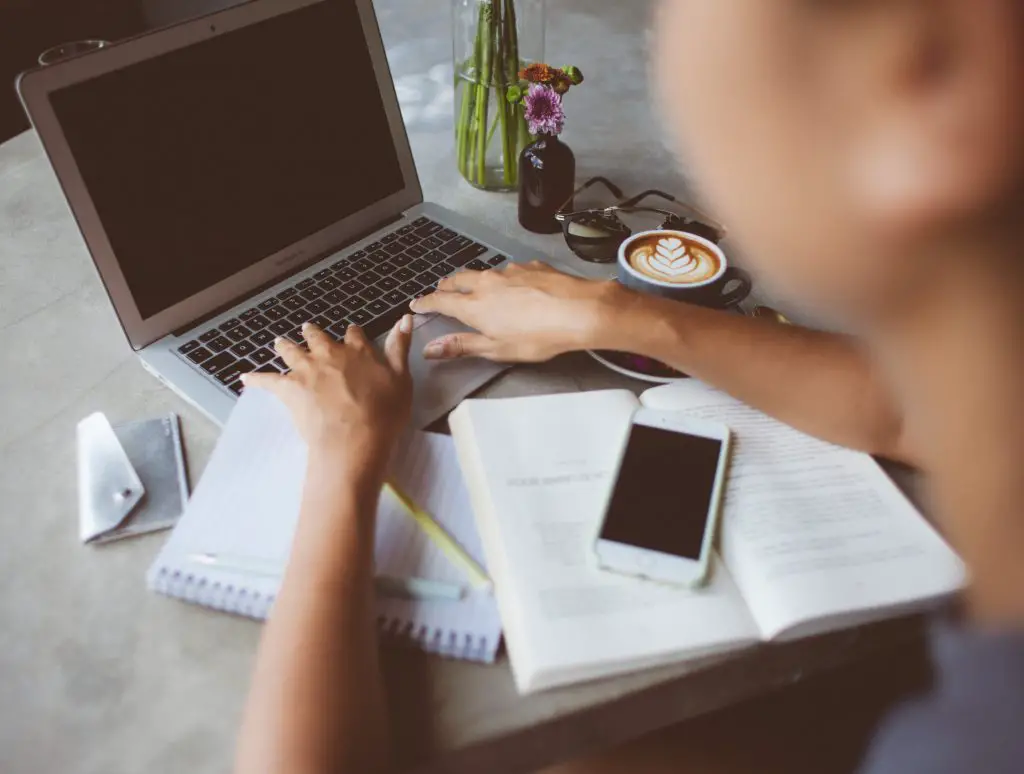
The IELTS Academic Writing Test has two separate writing tasks in 60 minutes. For each part, you will receive a question paper and an answer sheet. You can make notes on the question paper, only the text on the answer sheet will be marked by the examiner. You can write your answers in pen or pencil and correct when necessary. You cannot use a dictionary or any electronic devices.
IELTS Academic and General Training students do different tests for part 1 but complete the same test for part 2. There are many resources to help you prepare for part 2 here.
You must answer both tasks and it is recommended that you spend 20 minutes on task 1 and 40 minutes on task 2. Part 2 is twice as important as your score for part 1. Writing task 1 has a minimum word count of 150 words and you must write an essay. Writing task 2 has a minimum word count of 250, you must write a discursive essay, you will be given an opinion, problem or issue that you need to discuss.
Requirements from universities and immigration agencies vary. Most students will need at least a band score 6 for undergraduate study. For postgraduate study or immigration, a band score 7 is generally required.
In Academic Writing Task 1, you will be asked to write a short essay (150 words minimum) on a given chart, graph, process diagram or map. Each one has a slightly different essay structure, you can learn about those structures in the other posts in the writing task 1 section.
Writing Task 1 Marking Criteria
One of the first things you should do is read the marking criteria to see what the examiners expect. This is really important, as you need to know what they are looking for in the band 7+ boxes.
You should be able to give the examiners exactly what they want, in order to get a 7+ band score.
In the IELTS writing task 1 essay, you will be assessed on the four main areas >>
- Task Achievement
- Coherence and Cohesion
- Lexical Resource
- Grammatical Range and Accuracy
Let me break it down for you…….
Task Achievement
In this section, you must be able to ‘present a clear overview of the main trends, differences or stages’ this means that you are able to select the relevant information in the graph/chart. This should be very clear in your answer.
Coherence and Cohesion
In this section, you must produce an answer that can be easily understood by the reader (the examiner!). The criteria states that you should be able to ‘logically organises information and ideas; there is clear progression throughout’ this means that you have organised your information in easy to read paragraphs and the paragraphs have a good structure. The criterion also states that you should ‘uses a range of cohesive devices appropriately although there may be some under/overuse’. This refers to the use of linking words – such as; firstly, secondly, overall, one the one hand, on the other hand, furthermore, therefore, etc.
Lexical Resource
In this section the examiner will be looking at your vocabulary, making sure the words you have used are correct for this type of task. In the criteria, it states ‘uses a sufficient range of vocabulary to allow some flexibility and precision’. It is therefore important for you to study terms and keywords that can help you to gain a 7+ score in this task.
Grammatical Range and Accuracy
You have to write clear error-free sentences in this essay, as many grammatical or spelling errors will make the writing unclear and hard to follow. You also need to show that you have used the appropriate sentence structures, necessary for a formal academic essay. In the marking criteria, it states ‘uses a variety of complex structures, produces frequent error-free sentences, has good control of grammar and punctuation but may make a few errors’.

Writing Task 1 Structure
The structure that I advise my students to use, changes slightly depending on which question they have for writing task 1. However, it has a core structure, that if used well, will be sure to get you a band score 7+. You need to practice using this structure, with as many questions as you can, before sitting your IELTS test. This writing task 1 structure has been proven to be successful for my students and when perfected, can easily help you to achieve a high band score.

It is a 4-paragraph structure >>
Paragraph 1
This is the introduction to the essay and where you should start off by paraphrasing the question.
Do you understand what I mean, when I say ‘paraphrase’ the question?
This means that you rewrite the question in your own words using synonyms. You can’t just copy the question again or use the same words in the question. Paraphrase and show off your vocabulary knowledge by using synonyms. When practising your essay writing, use an online thesaurus to help you. This is a great tool and can help you to learn many new words.
Paragraph 2
This is the overview paragraph.
What is an overview? I hear you say.
An overview is where you clearly write about the general information you can see in the graph/chart. You give the examiner a clear overview of the main features and you can make comparisons if you can see any. You don’t have to mention any numbers/data/stats here; this information should be in the next two paragraphs.
Things you should look for >>
- Focus on what the main features are
- Look at the highest and lowest numbers
- See if there has been a substantial growth or decline in a particular category
- If there are a few categories, check if there is an obvious way to group them together into just two or three groups.
- Look for one or two categories, which break the pattern set by all of the others.
- Sometimes there are several different main features, which you can identify. You can circle the key information on the question paper before you start to write about your main features.
Paragraph 3
In the third paragraph, you write about the important details of the first main feature.
This is where you can give supporting details and write about the numbers, percentages or monetary values. You enter all of the stats/data needed to support your main feature.
You can also write about any comparisons that you can see.
Paragraph 4
In the fourth paragraph, you write about the important details of the second main feature.
This is where you continue to give supporting details and write about the numbers, percentages or monetary values. You enter all of the stats/data needed to support your second main feature.
You can also write about any comparisons that you can see.

You can’t get more points if you write more than 150 words, so should avoid writing too much. You should also be careful that you only spend around 20 minutes on this task, as writing task 2 is harder and more important in regards to the score.
There are practice tests you can download from the British Council.
We hope you found this post useful in helping you to study for the IELTS Test. If you have any questions please let us know in the comments below or on the Facebook page.
The best way to keep up to date with posts like this is to like us on Facebook, then follow us on Instagram and Pinterest.
If you need help preparing for the IELTS Test, join the IELTS Achieve Academy and see how we can assist you to achieve your desired band score. We offer an essay correction service, mock exams and online courses.

